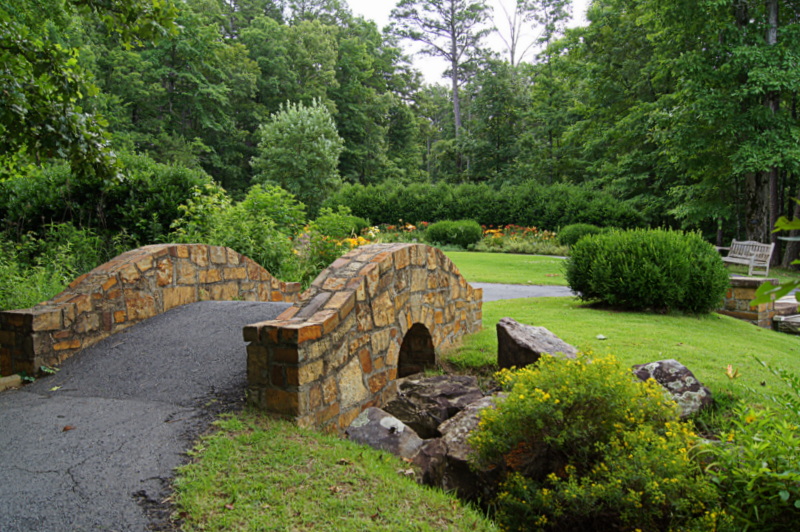By Cathy
Mary, Mary,
quite contrary,
How does your
garden grow?
With silver
bells and cockle shells,
And pretty
maids all in a row.
If you’re
like me, you’ve probably been spending some time outdoors doing a little yard
work or preparing your garden space for new flowers or vegetables. As I was
cleaning up one of my shade gardens I began to wonder about the history of
gardens. What did ancient gardens look like? What did they plant? I did some
research about gardens and thought I’d share a little with you. I’ve included a
few links if you’d like more information about the garden features.
Medieval Gardens (middle ages to 1500) were mostly near manor houses and monasteries.
The gardens consisted of raised beds for growing vegetables and herbs. They
were enclosed with wattle fences (saplings woven between upright posts) or
hedges. Trellis walkways and arbors provided shade and privacy. In the late 13th
century the rich began to grow gardens for pleasure adding trellises for roses
and vines, dovecotes (shelter for nesting pigeons), fish ponds, and orchards.
The Tudor
Gardens (1485 – 1603) were influenced by Renaissance Italy. The most recognized
feature was the intricate patterns of the knot garden, geometric beds edged
with low hedges. These gardens were designed to be viewed from above and filled
with herbs like lavender and flowers such as carnations, violets, magnolias,
and roses. Fountains were also popular and if there was enough space mazes and labyrinths were created as a source of entertainment.
Stuart
Gardens (1600 – 1700) were designed to be symmetrical, proportionate, and
balanced with long walks and great expanses of water that had dancing
fountains, water organs that played music, or pleasure boats. They often
contained water jokes where unsuspecting visitors were sprayed with jets of
water. In the gardens topiaries were used to create formal shapes out of shrubs. (You should really follow the link and listen to a water organ. It's incredible!)
Georgian
Gardens (1714 – 1830) were less formal layouts using box,
yew, laurel, privet and holly along with hibiscus, honeysuckle, lilac, passion
flower, and Virginia creeper. Flowers included roses, hellebores, irises, lilies, peonies, sage, tulips, and many others. The belief developed that
gardens should be enjoyed by all not just the rich. Parks and gardens merged
into one with lakes, grottoes, temples, and shrubberies. Circuit walks were
created for touring around the park.
In the Victorian
Gardens (1937 – 1901) returned to the more formal garden style with cast iron ornamental fencing and gates. Ornaments such as urns, sculptures, sundials, gazing balls, birdbaths, and man-made fish ponds were all commonly used. The obsession of plant collecting took hold and this style of garden could showcases their latest plants. Flowers beds appeared in brighter colors with asters, dianthus, chrysanthemums, ferns, hyacinths, irises, lilies, poppies, petunias, verbenas, and most important of all pansies and violas. Rockeries became the
craze as well as wild gardens. Arboretums displayed the collection of trees
while glass houses enabled the more tender plants to be cultivated such as
orchids.
Early American Gardens during the colonial period were planned according to the owners way of life. In rural areas a fenced-in garden near the house was planted with vegetables and herbs. Flowers were also grown, some for their beauty, but mostly for food, medicine, fragrance, or dyes. There was no garden plan as such, flowers were mixed with vegetables and herbs. They were usually planted in raised beds for good drainage. In contrast, the gardens of merchants and townsmen were more formal, laid out in a symmetrical pattern on each side of a central walkway.
Modern Gardens became more relaxed again and many styles of gardens were created such as the garden room which divided the garden into different themes, the cottage garden that looked less industrial, woodland gardens, prairie planting, and of course the ever popular rose garden.
Modern Gardens became more relaxed again and many styles of gardens were created such as the garden room which divided the garden into different themes, the cottage garden that looked less industrial, woodland gardens, prairie planting, and of course the ever popular rose garden.
So, how does
your garden grow? Is it wild or formal? Do you grow perennials or annuals? Shrubs
or flowers? Beds or containers? Birdbaths or fountains? However your garden grows I hope you find
time to sit quietly each day and enjoy it!


















7 comments:
What a wonderful visit and such lovely photos, Cathy. That last one of the rose is just gorgeous! I've never heard a water organ before! If I ever had a garden again, it would not be formal, but have bird baths and casual mixed borders, English style with Hollyhocks against the walls, cottage-garden style!
Beautiful post! I'm wondering if you have seent he movie "A Little Chaos" about one of the first woman gardeners at Versailles? I think you'd like it!
Cathy I always learn so much from reading your posts! Thank you for sharing your curiosity!
Love your photos and all this wonderful information! My garden these days consists of lots of flowering cactus. They are fairly care free and provide the most amazing flowers I've ever seen! So many of the flowers I love (peonies, dahlias, sweet peas) just won't grow here so I grow cactus. But I sure do admire the beautiful gardens people grow elsewhere!
I've been MIA this week, crazy, crazy week. But this post placed me in the slow lane for a few minutes and it was delightful! The photos are perfect illustrations. I can assure you - our garden looks like none of the above!
Also -thanks for linking to all the write ups -really interesting!
Ahhh... Beautiful!
Post a Comment
Thank you for sharing part of your day with us. If for any reason you are unable to leave a comment here on this post, please leave your comment on our Facebook page or in our Flickr discussion group. We love hearing from you!